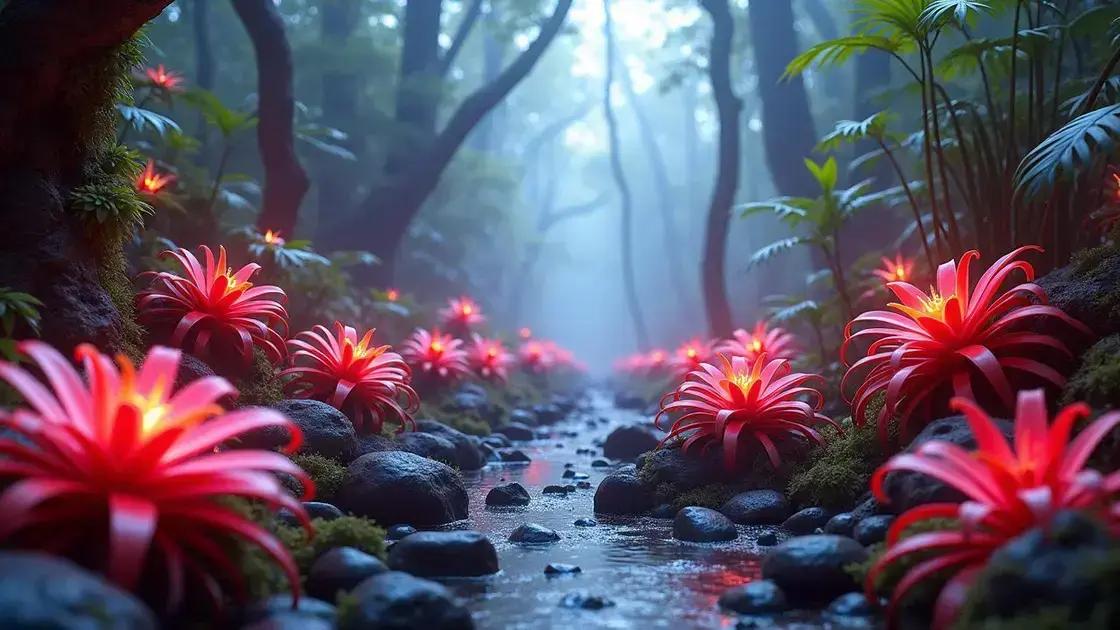How to Take Care of Bromeliad Plant: 5 Easy Tips for Thriving Growth
How to take care of bromeliad plant requires understanding their unique needs. These stunning plants offer vibrant colors and exotic shapes that can enhance any space. Finding the balance in care is key to keeping them healthy. Read on for tips to ensure your bromeliad thrives in your garden or home.
Table of Contents
ToggleEssential watering techniques for your bromeliad
How to take care of bromeliad plant involves mastering the essential watering techniques that keep these unique plants thriving. Proper watering is crucial for their health and beauty, helping them flourish in various indoor settings. Here’s a guide to ensuring your bromeliad gets the right amount of water without the risks of overwatering.
Understanding bromeliad watering requirements
- Bromeliads are typically epiphytic plants, meaning they can absorb water through their leaves and roots.
- They prefer a balance of moisture—not too dry and not too soggy.
- Using distilled water or rainwater is ideal to avoid chemicals found in tap water.
Watering methods for bromeliads
- Soak the tank: Water should be placed in the central “cup” of the plant. Ensure it’s clean and replenished every few days.
- Bottom watering: Place the bromeliad in a tray of water for about 15-20 minutes, allowing it to absorb moisture from the roots.
- Leaf misting: Lightly mist the leaves every few days, especially in dry indoor conditions, to maintain humidity around the plant.
Signs of overwatering and underwatering
- Overwatering signs:
- Yellowing leaves
- Soft, mushy roots
- Fungal growth in the soil
- Underwatering signs:
- Drooping leaves
- Dry and crispy leaf edges
- Slow growth
Best practices for bromeliad watering
To maintain optimal conditions, always check the moisture level before watering, and adjust your methods according to the season; less frequent watering is needed in winter. Remember, every bromeliad variety might have slightly different requirements based on its environment.
Explore additional care tips
For more insights into plant care, consider exploring indoor gardening techniques that can help you enhance your bromeliad’s environment.
Meta Description: Master how to take care of bromeliad plant with essential watering techniques and tips for keeping them healthy and vibrant.
Optimal light conditions for bromeliad growth

Optimal light conditions for bromeliad growth are essential for ensuring these striking plants flourish in your home or garden. Understanding how to provide the right light can significantly impact their health and vibrancy.
Importance of light for bromeliads
- Bromeliads thrive in bright, indirect sunlight.
- Proper light conditions enhance their colors and stimulate growth.
- Insufficient light may lead to leggy plants and dull coloration.
Types of light suitable for bromeliads
- Bright, indirect light: Ideal for most bromeliads, this mimics their natural environment.
- Filtered sunlight: Placing them near a window with sheer curtains can provide the perfect amount of light.
- Fluorescent lighting: For indoor gardens, using grow lights can supplement natural light effectively.
Signs of inadequate light exposure
- Weak growth: If your bromeliad is stretching towards a light source, it indicates insufficient light.
- Pale foliage: Lack of light may result in faded, less vibrant leaves.
- Flowering issues: Without adequate light, bromeliads may fail to bloom.
Summer and winter light adjustments
During the summer, moving your bromeliad slightly away from windows may be beneficial, as direct sunlight can scorch leaves. In winter, closer placement to windows can help them absorb available light.
Explore further tips for care
For more guidance on enhancing your indoor garden, check out exploring indoor gardening techniques.
Meta Description: Learn optimal light conditions for bromeliad growth, ensuring vibrant colors and healthy plants with expert care techniques.
Fertilizer advice for maintaining a healthy bromeliad
Fertilizer advice for maintaining a healthy bromeliad is essential for helping these unique plants flourish. Suitable fertilization helps support their growth and promotes vivid colors in the leaves and flowers, ensuring your bromeliads stay vibrant and healthy.
Understanding bromeliad fertilization needs
- Typically, these plants require less fertilizer compared to traditional houseplants.
- A balanced fertilizer with equal parts nitrogen, phosphorus, and potassium is ideal.
- Organic options such as compost or worm castings can also be beneficial.
When to fertilize your bromeliad
- Growing season: Fertilize every 4-6 weeks during the spring and summer when your bromeliad is actively growing.
- Resting period: Reduce or stop fertilizing in the fall and winter when most bromeliads go dormant.
How to apply fertilizer effectively
- Liquid fertilizers: Dilute liquid fertilizers to half the recommended strength and apply directly to the soil or leaves.
- Granular fertilizers: Sprinkle a small amount on top of the soil and water it in, allowing the nutrients to penetrate.
Common fertilization mistakes
Avoid the following to ensure your bromeliad thrives:
- Over-fertilizing, which can lead to salt buildup and root burn.
- Using fertilizers designed for other plant types, which may not meet specific bromeliad requirements.
Explore additional care options
For a deeper dive into plant care, consider exploring indoor gardening techniques that can enhance your overall gardening experience.
Meta Description: Discover fertilizer advice for maintaining a healthy bromeliad, ensuring a vibrant and flourishing plant through effective care techniques.
In conclusion
Caring for bromeliads requires attention to their unique watering, lighting, and fertilization needs. By implementing optimal watering techniques, ensuring adequate light conditions, and following proper fertilization advice, you can maintain a vibrant and healthy bromeliad. Remember to regularly observe your plants for any signs of stress or inadequacy in care. For further guidance and tips on enhancing your indoor garden, consider exploring resources that specialize in indoor plant care. Happy gardening!

